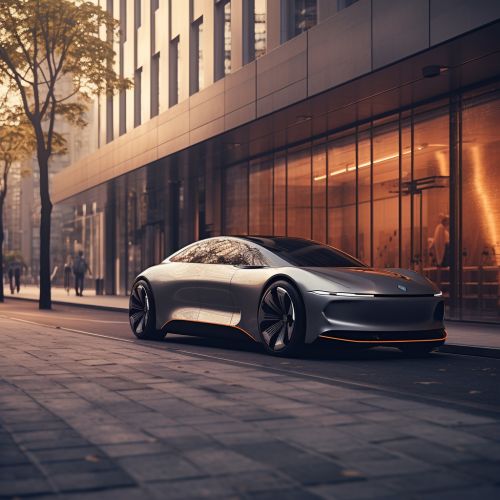Electric vehicle
Overview
An electric vehicle (EV), also referred to as an electric drive vehicle, is a vehicle which uses one or more electric motors for propulsion. Depending on the type of vehicle, motion may be provided by wheels or propellers driven by rotary motors, or in the case of tracked vehicles, by linear motors. EVs include road and rail vehicles, surface and underwater vessels, electric aircraft, and electric spacecraft.
Design and performance
Electric vehicles have electric motors instead of internal combustion engines (ICEs). An electric motor uses electrical energy to produce motion, unlike an ICE, which uses heat from burning fuel. The energy used to power an electric motor can come from a variety of sources, including batteries, fuel cells, and even the electric grid itself.
History
The history of electric vehicles dates back to the early 19th century, when inventors began experimenting with battery-powered vehicles. However, it was not until the late 20th century that electric vehicles became a viable alternative to gasoline-powered cars. This was largely due to advances in battery technology, which made it possible to store enough energy to power a vehicle for a reasonable distance.
Types of electric vehicles
There are several types of electric vehicles, including battery electric vehicles (BEVs), plug-in hybrid electric vehicles (PHEVs), and hybrid electric vehicles (HEVs). Each type has its own advantages and disadvantages, and the choice between them often depends on the specific needs and circumstances of the user.
Battery technology
The battery is a critical component of an electric vehicle, as it provides the energy needed to power the electric motor. There are several types of batteries used in electric vehicles, including lead-acid batteries, nickel-metal hydride batteries, and lithium-ion batteries. Each type has its own advantages and disadvantages, and the choice between them often depends on the specific needs and circumstances of the user.
Charging infrastructure
Charging infrastructure is a critical aspect of electric vehicle adoption. This includes public charging stations, home charging equipment, and even the electrical grid itself. The availability and accessibility of charging infrastructure can greatly influence the practicality and convenience of owning an electric vehicle.
Environmental impact
Electric vehicles have the potential to significantly reduce greenhouse gas emissions and air pollution, compared to conventional gasoline-powered cars. However, the environmental impact of electric vehicles can vary greatly depending on the source of the electricity used to charge them, and the methods used to manufacture their batteries.
Economic aspects
Electric vehicles can be more expensive to purchase than comparable gasoline-powered cars, but they can also be cheaper to operate and maintain. The cost-effectiveness of an electric vehicle can depend on a variety of factors, including the price of electricity, the price of gasoline, and the vehicle's efficiency.
Future of electric vehicles
The future of electric vehicles looks promising, with advances in battery technology, charging infrastructure, and vehicle design all contributing to their increasing popularity. However, there are still many challenges to overcome, including high purchase prices, limited driving range, and a lack of charging infrastructure in many areas.


